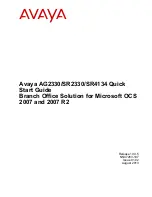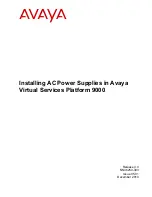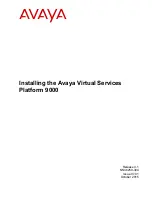
1-12
Cisco ASA Series CLI Configuration Guide
Chapter 1 Configuring EIGRP
Customizing EIGRP
Defining an EIGRP Neighbor
EIGRP hello packets are sent as multicast packets. If an EIGRP neighbor is located across a non
broadcast network, such as a tunnel, you must manually define that neighbor. When you manually define
an EIGRP neighbor, hello packets are sent to that neighbor as unicast messages.
To manually define an EIGRP neighbor, perform the following steps:
Detailed Steps
Redistributing Routes Into EIGRP
You can redistribute routes discovered by RIP and OSPF into the EIGRP routing process. You can also
redistribute static and connected routes into the EIGRP routing process. You do not need to redistribute
connected routes if they fall within the range of a
network
statement in the EIGRP configuration.
Note
For RIP only: Before you begin this procedure, you must create a route map to further define which
routes from the specified routing protocol are redistributed in to the RIP routing process. See
for more information about creating a route map.
To redistribute routes into the EIGRP routing process, perform the following steps:
Command
Purpose
Step 1
router eigrp
as-num
Example:
hostname(config)# router eigrp
2
Creates an EIGRP routing process and enters router configuration
mode for this EIGRP process.
The
as-num
argument is the autonomous system number of the
EIGRP routing process.
Step 2
neighbor
ip-addr
interface
if_name
Example:
hostname(config)# router eigrp 2
hostname(config-router)# neighbor 10.0.0.0
interface
interface1
Defines the static neighbor.
The
ip-addr
argument is the IP address of the neighbor.
The
if-name
argument is the name of the interface, as specified by
the
nameif
command, through which that neighbor is available.
You can define multiple neighbors for an EIGRP routing process.
Summary of Contents for 5505 - ASA Firewall Edition Bundle
Page 28: ...Glossary GL 24 Cisco ASA Series CLI Configuration Guide ...
Page 61: ...P A R T 1 Getting Started with the ASA ...
Page 62: ......
Page 219: ...P A R T 2 Configuring High Availability and Scalability ...
Page 220: ......
Page 403: ...P A R T 2 Configuring Interfaces ...
Page 404: ......
Page 499: ...P A R T 2 Configuring Basic Settings ...
Page 500: ......
Page 533: ...P A R T 2 Configuring Objects and Access Lists ...
Page 534: ......
Page 601: ...P A R T 2 Configuring IP Routing ...
Page 602: ......
Page 745: ...P A R T 2 Configuring Network Address Translation ...
Page 746: ......
Page 845: ...P A R T 2 Configuring AAA Servers and the Local Database ...
Page 846: ......
Page 981: ...P A R T 2 Configuring Access Control ...
Page 982: ......
Page 1061: ...P A R T 2 Configuring Service Policies Using the Modular Policy Framework ...
Page 1062: ......
Page 1093: ...P A R T 2 Configuring Application Inspection ...
Page 1094: ......
Page 1191: ...P A R T 2 Configuring Unified Communications ...
Page 1192: ......
Page 1333: ...P A R T 2 Configuring Connection Settings and QoS ...
Page 1334: ......
Page 1379: ...P A R T 2 Configuring Advanced Network Protection ...
Page 1380: ......
Page 1475: ...P A R T 2 Configuring Modules ...
Page 1476: ......
Page 1549: ...P A R T 2 Configuring VPN ...
Page 1550: ......
Page 1965: ...P A R T 2 Configuring Logging SNMP and Smart Call Home ...
Page 1966: ......
Page 2059: ...P A R T 2 System Administration ...
Page 2060: ......
Page 2098: ...1 8 Cisco ASA Series CLI Configuration Guide Chapter 1 Troubleshooting Viewing the Coredump ...
Page 2099: ...P A R T 2 Reference ...
Page 2100: ......












































